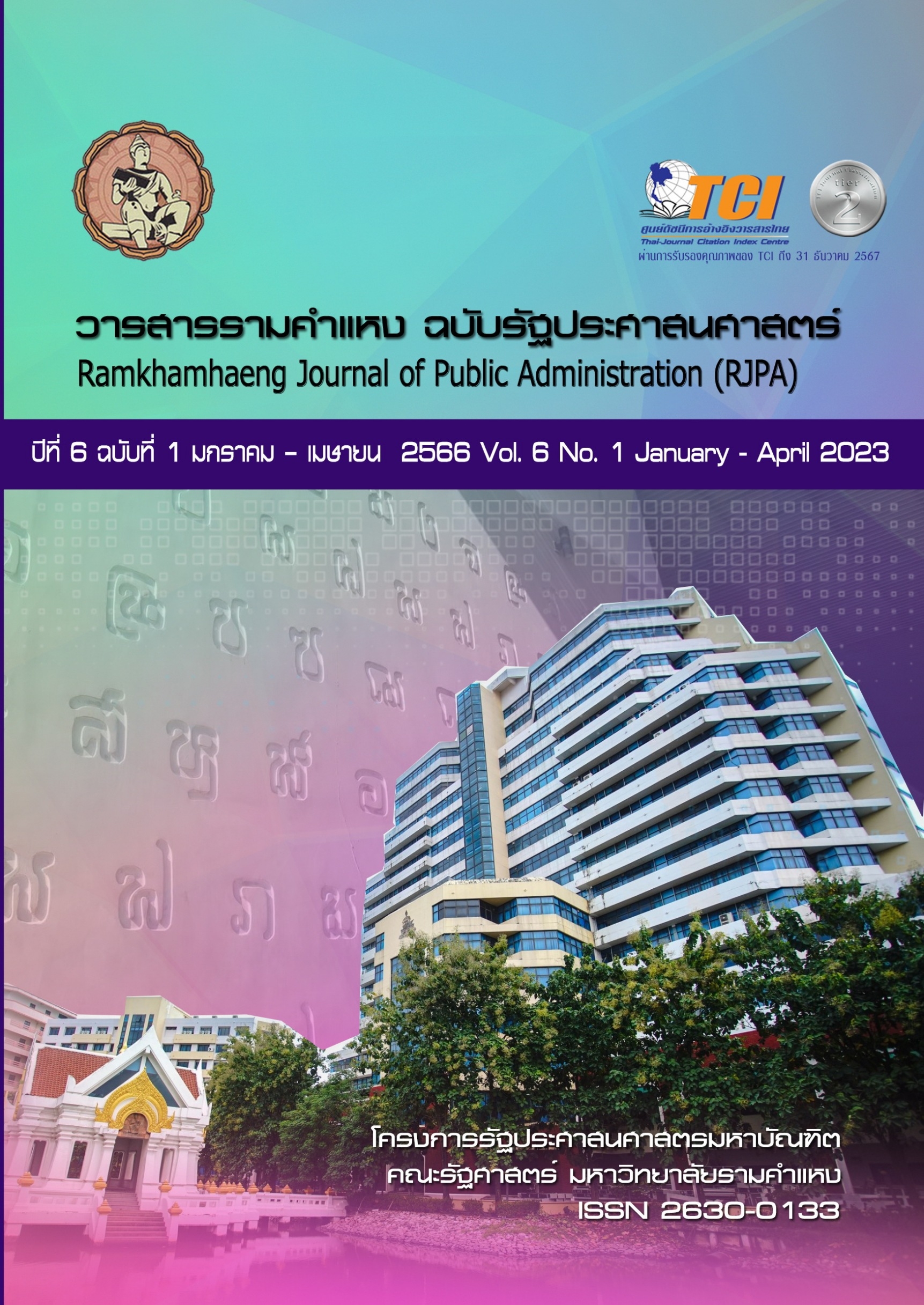Mechanisms of policy cooperation between Thailand and China on the new overseas Chinese in Thailand under BRI context
Keywords:
new overseas Chinese, mechanisms of policy cooperation, Chinese associationsAbstract
In this research entitled “Mechanisms of policy cooperation between Thailand and China on the new overseas Chinese in Thailand under BRI context,” the objectives were to study (1) the mechanism of network buildings of the new overseas Chinese in Thailand under the context of Belt and Road Initiative (BRI) (2) the interaction between the new overseas Chinese Associations and the Thai government sectors (3) the mechanism development for promoting people-to-people exchanges and networking opportunities. This research was qualitative research consisting of documentary research and field research. The research found that since 1978 the number of new overseas Chinese migrating to Thailand has increased enormously. The new overseas Chinese in Thailand has an important role for trade and investment under the BRI context. New overseas Chinese who became nationalized Thai citizens are able to establish the associations with network buildings. The study found that interactions between the new Chinese associations and Thai governmental sectors in 4 dimensions showed different interactions. Many new overseas Chinese business associations are very active in trading and investment, however, there has been only a symbolic interaction in the establishment of friendship cities between Thailand and China. Many new Chinese associations interact moderately in education and culture, but have no interaction on security issues.
References
อาร์ม ตั้งนิรันดร์. (2562). จีน-เมริกา : จากสงครามการค้า สู่สงครามเทคโนโลยี ถึงสงครามเย็น 2.0. กรุงเทพฯ: Bookscape.
Callahan, A. (2016). China’s “Asia Dream” The Belt Road Initiative and the new regional order. Asian Journal of Comparative Politics, 1 (3), 226-243.
Nukitrangsan, K. (2019). The New Chinese Migrants in Thailand: Mobilities, Roles, and Influences of Sino-Thai Relations. Retrieved November 15, 2022 from http://www.vijaichina.com/sites/default/files/6.2%20Kulnaree%20Nukitrangsan.pdf
Liu, Hong. (1998). Old Linkages, New Networks: The Globalization of Overseas Chinese Voluntary Associations and its Implications. The China Quarterly, 155 (September), 588 – 609.
Wang, Yiwei. (2016). China connects the world: What behind the Belt and Road Initiative. China Intercontinental Press & New World Press.
Zhang, Weiwei. (2011). The China wave: Rise of a civilizational state. New York: World Century. 陈瑞娟.(2016).“一带一路”建设背景下广州开展华侨华人统战工作的思考.广州社会主义学院学报 (02),60-63.
李其荣.(2008).新华侨华人的职业结构及其影响因素———美国与加拿大的比较. 东南亚研究(02),72-79.
魏斌.(2018).华侨华人与“一带一路”战略.天津市社会主义学院学报(04),57-60. 张秀明.(2001).国际移民体系中的中国大陆移民———也谈新移民问题.华侨华人历史研究.第1期.
赵和曼.(2003).美国新华侨华人的若干变化. 八桂侨刊.第1期
张维为. (2019). 这就是中国.上海:上海人民出版社. 庄国土.(2020).21世纪前期海外华侨华人社团发展的特点评析.南洋问题研究(01),55-64.
Downloads
Published
How to Cite
Issue
Section
Categories
License
Copyright (c) 2025 ศิริลักษม์ ตันตยกุล

This work is licensed under a Creative Commons Attribution-NonCommercial-NoDerivatives 4.0 International License.


